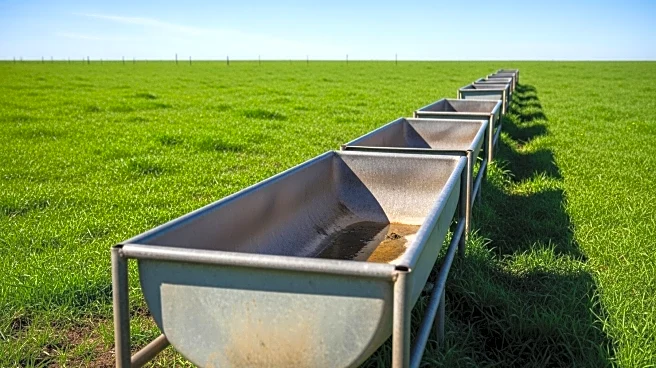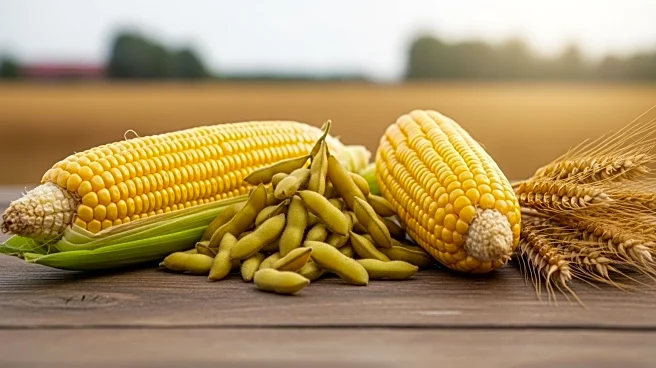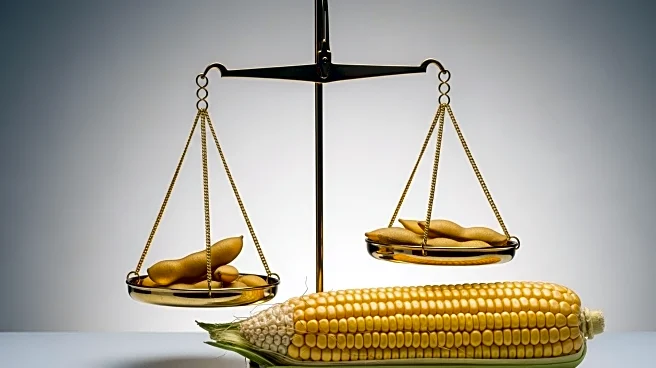What is the story about?
What's Happening?
On September 9, 2025, livestock markets experienced mixed results, with notable declines in feeder cattle prices. Feeder cattle closed down $9.25 at $349.93 per hundredweight, influenced by a softening cash market. Karl Setzer from Consus Ag Consulting noted that the cash market, which previously led futures higher, is now driving them lower. Auction sales for feeders were steady to $4 lower, while calf sales dropped by $2 to $6. The annual fall run of calves has begun, with favorable pasture conditions due to ample soil moisture from wheat seeding. Despite cheap feed grain, it is currently more economical to place feeders in lots rather than pastures. Meanwhile, lean hogs showed strength, closing up 98¢ at $96.13 per hundredweight, although they faced pressure from the cattle complex.
Why It's Important?
The decline in feeder cattle prices reflects broader market dynamics and could impact the agricultural sector significantly. Lower cattle prices may affect ranchers' profitability, especially those relying on pasture conditions for feeding. The shift towards placing feeders in lots due to economic considerations could alter traditional farming practices. Additionally, the mixed performance of livestock markets, with hogs showing resilience, indicates potential shifts in consumer demand and market strategies. These developments could influence future pricing and supply chain decisions within the livestock industry.
What's Next?
Market participants are closely monitoring the annual fall run of calves and pasture conditions, which could further influence cattle prices. The ongoing positioning for the World Agricultural Supply and Demand Estimates (WASDE) report may also affect market trends. Traders and farmers will likely continue to assess the economic viability of feed grain versus pasture feeding, potentially leading to strategic adjustments in livestock management. The broader agricultural market may experience fluctuations as stakeholders respond to these evolving conditions.
Beyond the Headlines
The current market situation highlights the complex interplay between environmental factors and economic decisions in agriculture. Favorable pasture conditions, while beneficial for grazing, are juxtaposed against the economic advantages of feed grain, prompting strategic shifts. This scenario underscores the importance of adaptive strategies in farming, where environmental and market conditions must be balanced to optimize profitability and sustainability.
AI Generated Content
Do you find this article useful?














